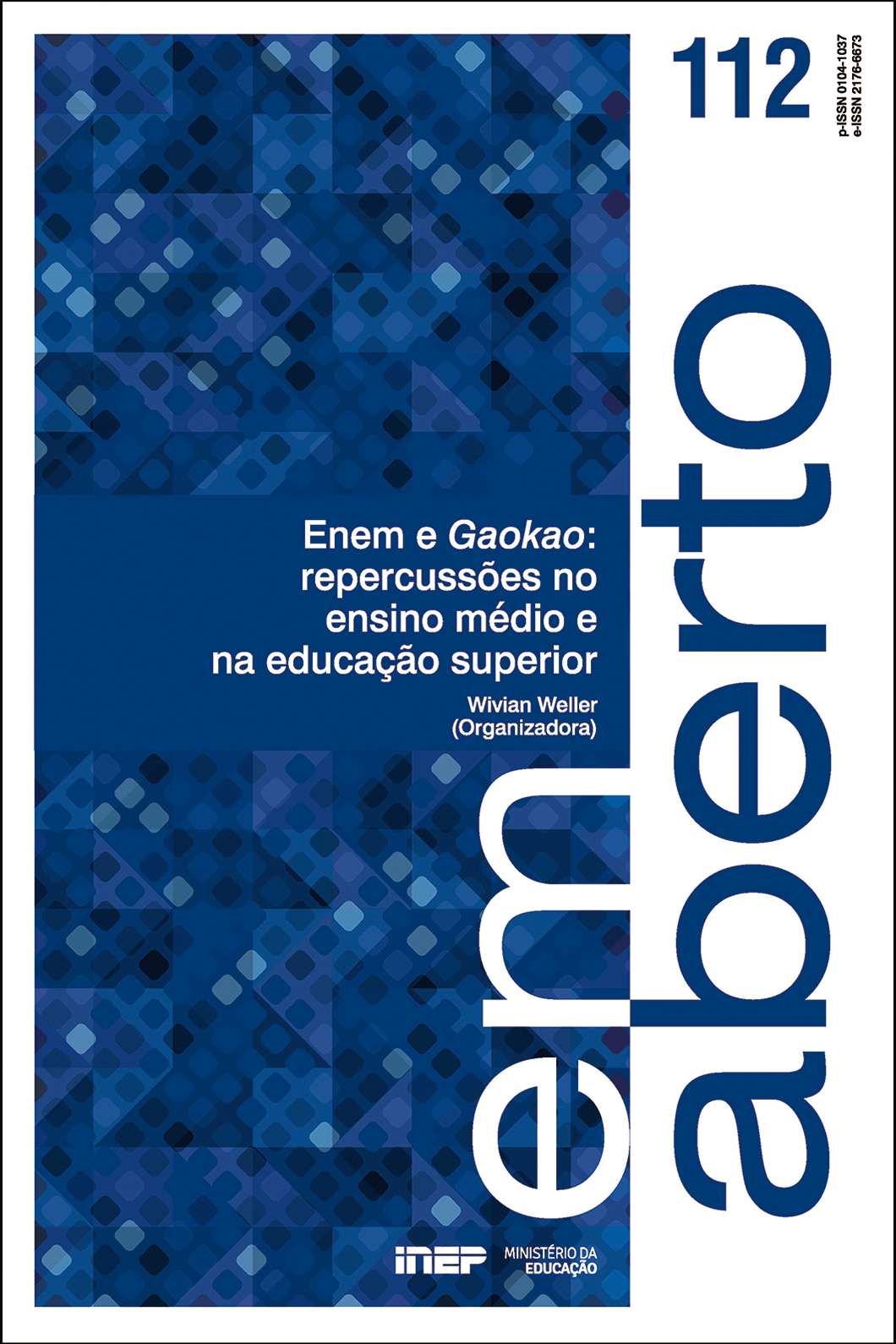Gaokao: ¿vector de movilidad social o guardián del elitismo?
Resumen
Este artículo sigue con el análisis de los datos recogidos en 2007, con el objetivo de examinar si el Gaokao ha facilitado la movilidad social ascendente en China. En la primera parte se analizan los datos nacionales y regionales sobre las tendencias de los cambios en los exámenes, el acceso a los distintos tipos de universidades y el mantenimiento de las oportunidades de acceso a las instituciones de élite para los grupos sociales privilegiados. La segunda parte investiga el impacto del examen a lo largo de 14 años y para eso tres entrevistados codificados como Gaokao-campeão, Gaokao-perdedor e Gaokao-mediocre participaron. La comparación de los resultados de sus exámenes con sus posteriores trayectorias profesionales y el estatus social pone de manifiesto dos aspectos: 1) el Gaokao promueve la ideología de la meritocracia y promete una movilidad social ascendente a través de la ampliación de las oportunidades de educación superior; 2) detrás del aspecto meritocrático se encuentra la profundización de la desigualdad social en todos los niveles, desde los ingresos hasta el estatus de hukou y las redes sociales. Esta desigualdad mantiene las oportunidades y las redes de las élites. El Gaokao sirve para legitimar los privilegios, sino también para justificar las promesas incumplidas de movilidad social ascendente y normalizar la sensación de devaluación e inutilidad de las personas de origen rural y de la clase trabajadora.
Descargas
Citas
ANG, Y. Y. How China escaped the poverty trap. New York: Cornell University Press, 2016.
CEBOLLA-BOADO, H.; HU, Y.; SOYSAL, Y. N. Why study abroad?: sorting of Chinese students across British universities. British Journal of Sociology of Education, [s. l.], v. 39, n. 3, p. 365-380, 2018.
CHINA. Ministry of Education (MOE). The 211 Project. Beijing: Ministry of Education of the People’s Republic of China, 2001. Disponível em: http://www.moe.gov.cn/publicfiles/business/htmlfiles/moe/moe_1985/200804/9084.html. Acesso em: 5 set. 2021.
CHINA. National Bureau of Statistics of China (NBSC). China Statistical Yearbook 2019. [Beijing], 2019. Disponível em: http://www.stats.gov.cn/tjsj/ndsj/2019/indexeh.htm. Acesso em: 14 dez. 2021.
CHINA. National Bureau of Statistics of China (NBSC). Households’ income and consumption expenditure in 2019. Beijing, Jan. 2020. Disponível em: http://www.stats.gov.cn/english/PressRelease/202001/t20200119_1723719.html. Acesso em: 8 dez. 2021.
DONNELLY, M.; EVANS, C. Framing the geographies of higher education participation: schools, place and national identity. British Educational Research Journal, [s. l.], v. 42, n. 1, p. 74-92, Feb. 2016.
FONG, V. L. China’s one-child policy and the empowerment of urban daughters. American Anthropologist, [s. l.], v. 104, n. 4, p. 1098-1109, Dec. 2002.
FONG, V. L. Only hope: coming of age under China’s one-child policy. Stanford, Calif.: Stanford University Press, 2004. 242 p.
HENZE, J.; ZHU, J. Current research on Chinese students studying abroad. Research in Comparative and International Education, [s. l.], v. 7, n. 1, p. 90-104, 2012.
KIM, S. W.; BROWN, K.; FONG, V. L. Credentialism and career aspirations: how urban Chinese youth chose high school and college majors. Comparative Education Review, [s. l.], v. 60, n. 2, p. 271-292, May 2016.
KIM, S. W.; BROWN, K.; FONG, V. L. How flexible gender identities give young women advantages in China’s new economy. Gender and Education, [s. l.], v. 30, n. 8, p. 982-1000, 2018.
KIM, S. W.; FONG, V. L. A longitudinal study of son and daughter preference among Chinese only-children from adolescence to adulthood. The China Journal, [s. l.], n. 71, p. 1-24, Jan. 2014.
LIU, Y. Geographical stratification and the role of the state in access to higher education in contemporary China. International Journal of Educational Development, [s. l.], v. 44, p. 108-117, Sept. 2015.
LIU, Y. Higher education, meritocracy and inequality in China. [s. l.]: Springer, 81 2016.
LIU, Y. Geographical stratification and the provision of education in contemporary China. In: CARRILLO GARCIA, B.; HOOD, J.; KADTZ, P. I. (Eds.). Handbook of welfare in China. Cheltenham: Edwad Elgar Publishing, 2017. (Handbooks of Research in Contemporary China).
LIU, Y. When choices become chances: extending Boudon’s positional theory to understand University choices in contemporary China. Comparative Education Review, [s. l.], v. 62, n. 1, p. 125-146, Feb. 2018.
LOYALKA, P. et al. Inequalities in the pathway to College in China: when do students from poor areas fall behind? The China Quarterly, [s. l.], v. 229, p. 172- 194, 2017.
LU, X. Contemporary Chinese social structure. Beijing: Chinese Academy of Social Sciences, 2010.
LYU, M.; LI, W.; XIE, Y. The influences of family background and structural factors on children’s academic performances: a cross-country comparative study. Chinese Journal of Sociology, [s. l.], v. 5, n. 2, p. 173-192, Apr. 2019.
MARGINSON, S. High participation systems of higher education. The Journal of Higher Education, [s. l.], v. 87, n. 2, p. 243-271, 2016.
OUR WORLD IN DATA. Enrollment ratios between 1980 and 2010 for tertiary education. [s. d.]. Disponível em: <https://ourworldindata.org/tertiary-education>. Acesso em: 6 set. 2021.
QUAN, R.; HE, X.; SLOAN, D. Examining Chinese postgraduate students’ academic adjustment in the UK higher education sector: aprocess-based stage model. Teaching in Higher Education, [s. l.], v. 21, n. 3, p. 326-343, Feb. 2016.
REAY, D.; CROZIER, G.; CLAYTON, J. ‘Strangers in paradise’? Sociology, [s. l.], v. 43, n. 6, p. 1103-1121, Dec. 2009.
RUAN, D. et al. Silent revolution: social origins and university matriculation at Peking University and Suzhou University, 1952-2002. Social Sciences in China, Beijing, v. 1, n. 1, p. 98-118, Jan. 2012.
SHEN, W. Transnational research training: Chinese visiting doctoral students overseas and their host supervisors. Higher Education Quarterly, [s. l.], v. 72, n. 3, p. 224-236, 2018.
TAM, T.; JIANG, J. Divergent urban-rural trends in college attendance. Sociology of Education, [s. l.], v. 88, n. 2, p. 160-180, 2015.
TSUI, M.; RICH, L. The only child and educational opportunity for girls in urban China. Gender & Society, [s. l.], v. 16, n. 1, p. 74-92, Feb. 2002.
WANG, Y.; FONG, V. L. Little emperors and the 4:2:1 generation: China’s singletons. Journal of The American Academy of Child & Adolescent Psychiatry, [s. l.], v. 48, n. 12, p. 1137-1139, 2009.
WU, X. Higher education, elite formation and social stratification in contemporary China: preliminary findings from the Beijing college students panel survey. Chinese Journal of Sociology, [s. l.], v. 3, n. 1, p. 3-31, 2017.
XIONG, P.; LONG, H.; DOU, W. The data secret files on the 985 Universities in 2016. The Paper, Shanghai, [s. l.], v. 1, n. 1, p. 1-2, June 2016.
Derechos de autor 2021 Em Aberto

Esta obra está bajo licencia internacional Creative Commons Reconocimiento-NoComercial 4.0.
Aquí están los términos de la asignación de derechos de autor:
- Declaro que cedo permanentemente al Instituto Nacional de Estudios e Investigaciones Educativas (INEP) los derechos relacionados con:
- edición, publicación, reproducción y distribución de la obra;
- distribución en medios digitales o electrónicos;
- traducción de la obra a cualquier idioma;
- actualización, reimprensión, adaptación y compactación del trabajo;
- inclusión en el ambiente de publicación de la página del INEP;
- la difusión a través de la red mundial (internet), tanto en Brasil como en el extranjero, de todo o parte del trabajo;
- autorización a terceros para realizar cualquiera de los actos enumerados en los párrafos anteriores.
- Declaro expresamente que las opiniones expresadas en el trabajo son de mi exclusiva responsabilidad y que la publicación del trabajo no viola los derechos de terceros.
- Declaro que la preparación del trabajo antes mencionado tiene un carácter público pro bono y, por lo tanto, renuncio a la recepción de cualquier remuneración pertinente a los derechos patrimoniales ahora asignados.
- Autorizo la revisión gramatical y ortográfica del texto, siempre que no altere el contenido y las opiniones que contiene.












